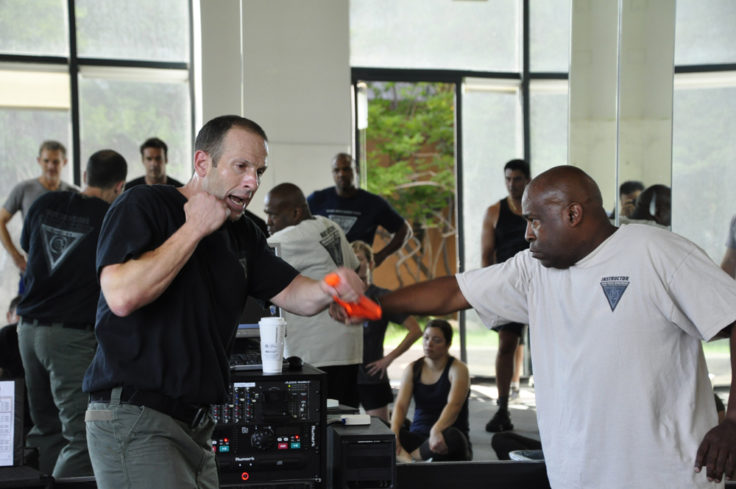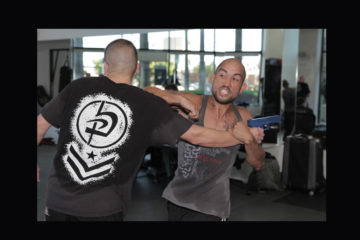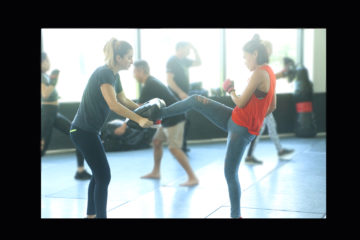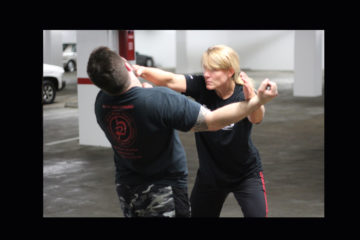Krav Maga is a self-defense system for real-world situations. When you are in a threatening situation, you must quickly analyze the threats to determine how you will respond. Learn to use threat pattern recognition to read body language and other situational cues to give yourself the best chance to fight back and survive.
While you can reference these tips to watch for and understand dangerous situations you may face, you will not be effectively prepared until you have learned directly from an experienced self-defense instructor.
Threat Analysis For The Real World
Start with a clear understanding of your goals for analyzing and responding to threats in the real world. Survival should be your top priority. That may mean running away when you’re outnumbered or threatened with weapons, but it always means acting decisively. To do this, you must be on the lookout for nonverbal cues to prepare for threats in the time leading up to a confrontation.
Reading The Human Body
Before we take a look at specific physical cues, understand that these are generalities. They can be helpful in threat analysis, but it’s best to understand and process each situation on a case by case basis and adapt as new information as it becomes available.
Overall Posture - This is the big picture analysis that you’re going to pick up first. Somebody walking quickly or running toward you is a cue to immediately be on your guard. Threats who are standing up tall are more likely trying to appear intimidating. Threats who are hunched over are more likely to be concealing a weapon.
Look for signs in their balance or speech pattern that may indicate the influence of drugs or alcohol. While this will most likely make individuals less competent in hand to hand fighting, people can become dangerously unpredictable under these circumstances while they possess a weapon.
Head and Eyes - Where someone is looking is the best indicator of their next move, and where your threat pattern recognition should pick up next. If you find yourself drawing eyesight from someone you don’t know, you should absolutely prepare yourself for anything they might do.
When store customers pay more attention to the staff or other customers than to their shopping, it’s a giveaway that they may be intending to shoplift. Applying the same idea to other situations can help you pick out someone up to no good.
Feet, Legs, And Hips - Look for a change in walking speed and gait that may indicate anxious anticipation of a coming confrontation. In the moments leading up to an attack, an attacker will sometimes fast walk or take larger steps toward their target.
The direction someone’s feet are pointing can help with threat analysis by indicating where they intend to move. An attacker who is up on the balls of their feet is taking an aggressive stance and ready to fight, however, an attacker on their heels is ready to retreat and keep their distance, possibly to create space for using a weapon. Watch for a shift in an attacker’s weight as they move, especially in their hips, that tell you which way they’re prepared to go.
Hands, Arms, And Shoulders - Most attacks will generally come from the hands or arms. A stance that leaves one shoulder farther back indicates an intent to strike while the forward shoulder provides a shield against counterpunches, however, even shoulders mean an attacker is prepared to lunge and grab. An outstretched arm can be used to create space for the attacker to draw a weapon or to fend you off should you counterstrike. Loosely held hands signal ease and a feeling of control, while clenching fists indicate stress and may precede an attack.

Attackers Using Weapons
An attacker with an obvious or displayed weapon adds a new and dangerous dimension to any altercation. The presence of a force multiplier makes threat pattern recognition much more important. Analyzing the threat with insight from your training will help you determine how to disarm them.
Blunt Weapons
Club-type weapons are some of the easiest to create or use. Whether it’s a baseball bat or a pool cue, they’re simple weapons that assailants use for intimidation and assault. Club-type weapons swing in an arc and the farthest end of the club will deliver the most power. If you intend to strike an opponent wielding a club, your goal should be to get inside the arc of their swing, where it will do less damage.
Knives
Knives are common utility tools that can easily be used as weapons. However, there are also blades that are specifically made for assault or tactical purposes. The type of knife being used can help with threat analysis. Recognizing if the weapon is a common pocket knife, or kitchen knife can give you insight into better resolving or diffusing the situation.
The attacker's grip can also give you a clue to their intentions. A knife being held in an overhand or downward thrust grip is highly aggressive. An underhand, or forward thrust grip is both offensive and defensive.
Firearms
The way a threatening individual holds and uses a firearm speaks volumes about their intentions and proficiency with those weapons. Brandishing a gun at close range may indicate a lack of proficiency with it, and may present the best possible opportunity for you to disarm them. An experienced person using a firearm is more likely to create space.
Preparing Yourself
By keenly analyzing threats through threat pattern recognition, you can more appropriately respond to the threat. While these tips can be used as a reference, the most effective preparation you can make is training under the supervision of an experienced self-defense instructor. Find a self-defense course near you by Krav Maga Worldwide.






